Interior lighting design isn’t just about making sure your space is bright enough to avoid tripping over your phone charger—it’s a crucial part of lighting for home that influences the functionality and vibe of each room. From brightening up your kitchen for a late-night snack run to creating a cozy, Instagram-worthy bedroom retreat, getting your interior lighting design right is key to crafting the perfect atmosphere. Here’s how to choose the right lighting for every room, making your home shine with style and practicality.
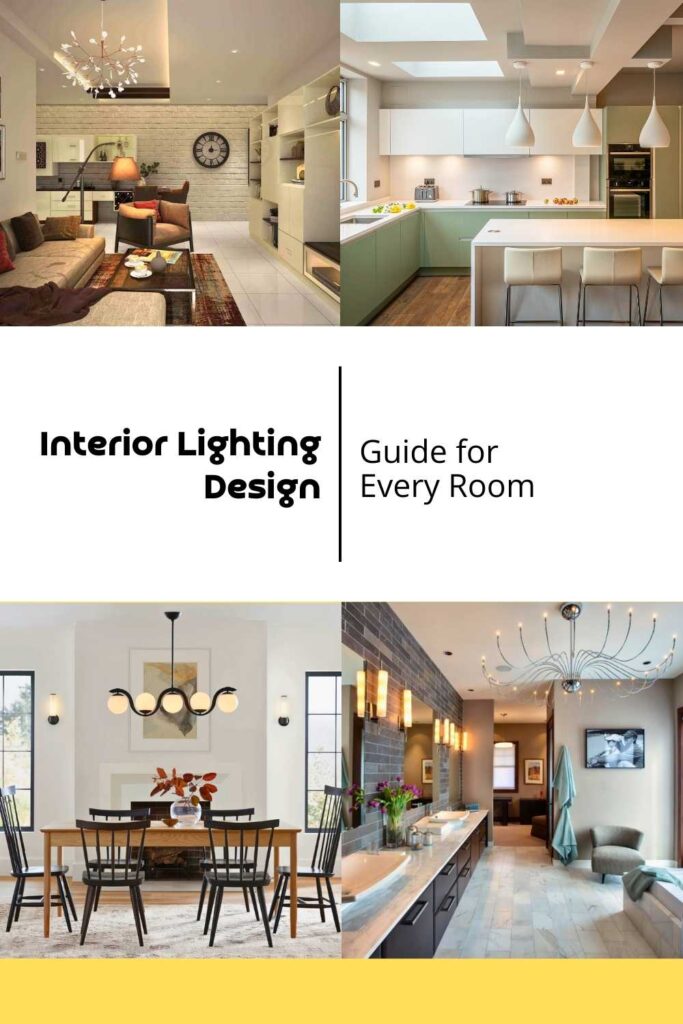
Table of Contents
Understanding the Types of Lighting
Daylight
Daylight is the natural light that enters a room from windows, skylights, or other openings. It’s the most dynamic and variable type of lighting, changing with the time of day and weather conditions. Incorporating daylight into your interior lighting design can enhance the space’s overall ambiance and reduce the need for artificial lighting during the day.
Tips for Maximizing Daylight:
- Window Treatments: Use sheer curtains or blinds that can be adjusted to control the amount of natural light while maintaining privacy.
- Reflective Surfaces: Incorporate mirrors and light-colored surfaces to bounce daylight around the room, enhancing brightness and reducing shadows.
- Skylights and Solar Tubes: These can be installed to bring natural light into areas that might not have sufficient windows.
Ambient Lighting
Ambient lighting is your room’s primary source of light. It’s like the foundational beat of your favorite playlist—setting the overall tone and keeping everything in rhythm. This type of lighting provides general illumination that ensures every corner of the room is well-lit. Common sources include ceiling-mounted fixtures, chandeliers, and recessed lighting.
Tips for Choosing Ambient Lighting:
- Room Size and Ceiling Height: Larger rooms or high ceilings may require multiple light sources or larger fixtures.
- Brightness Levels: Choose fixtures that offer enough light to fill the space without being harsh or glaring.
Task Lighting
If ambient lighting is the beat, task lighting is the groove—focused and functional. It’s designed to help you see better while performing specific tasks, whether it’s reading, cooking, or working on your latest DIY project. Task lighting typically comes from desk lamps, under-cabinet lights, or pendant lights.
Tips for Choosing Task Lighting:
- Match the Fixture to the Task: Ensure the light is bright enough for the activity but not so intense that it causes glare.
- Flexibility: Opt for adjustable fixtures to direct light precisely where you need it.
Accent Lighting
Accent lighting is like the remix—a little something extra to highlight your room’s best features. It adds visual interest and draws attention to specific elements such as artwork, architectural details, or even your collection of vintage Funko Pop figures. Examples include wall sconces, track lighting, and spotlights.
Tips for Choosing Accent Lighting:
- Complement Your Decor: Choose fixtures that enhance and not overpower your room’s existing style.
- Highlight Key Features: Use accent lighting to spotlight items or areas you want to showcase.
Choosing Lighting for Different Rooms
Living Room
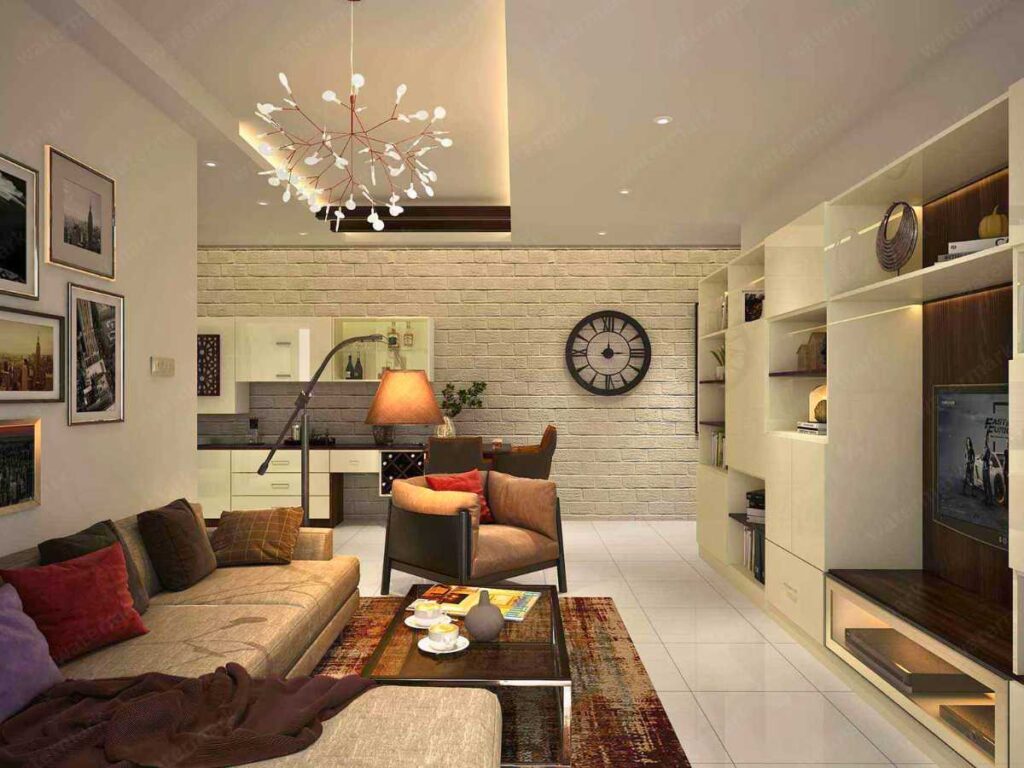
Your living room is where you entertain, relax, and binge-watch every episode of your latest obsession. For this versatile space, you’ll need a mix of ambient, task, and accent lighting.
Lighting Recommendations:
- Ambient: A stylish ceiling fixture or chandelier to set the scene.
- Task: Table lamps for reading or adjustable floor lamps for flexible lighting options.
- Accent: Wall sconces or track lighting to highlight artwork or unique features.
Kitchen
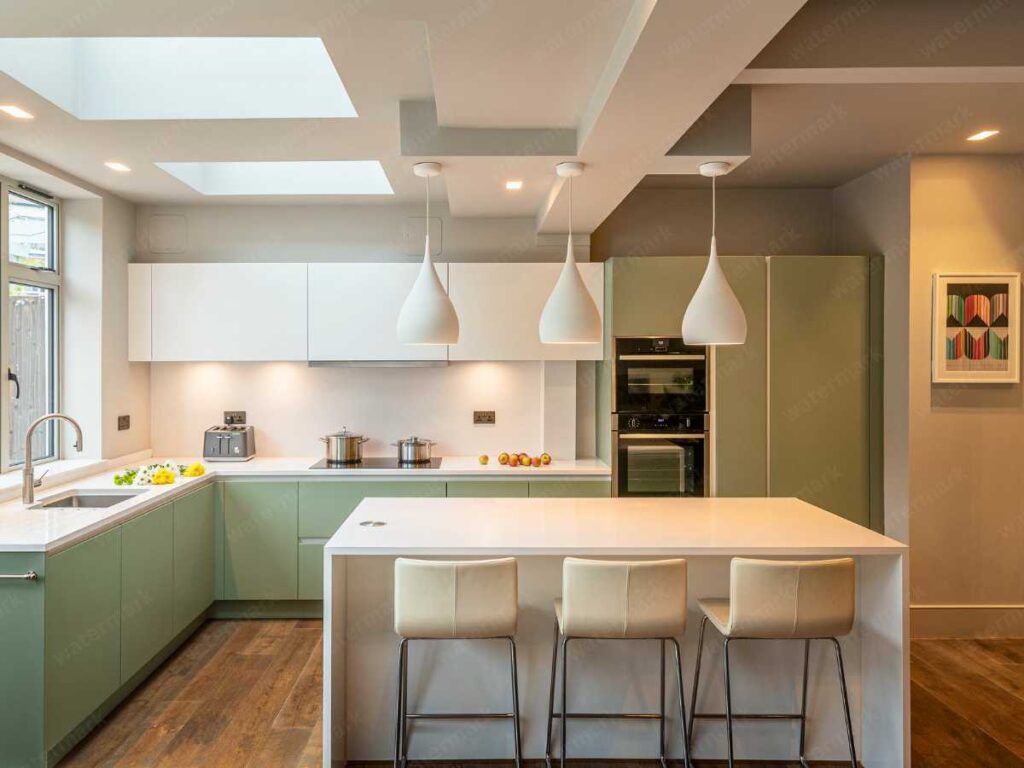
The kitchen is the heart of the home, where you whip up everything from gourmet meals to late-night snacks. Here, functionality meets style, so choose lighting for home that supports cooking while adding a touch of flair.
Lighting Recommendations:
- Ambient: Recessed ceiling lights or flush-mount fixtures can provide the general illumination you need to see across the kitchen.
- Task: Pendant lights over the kitchen island or under-cabinet lighting for countertops are classic examples of task lighting in the kitchen. Pendant lights not only add style but also ensure your work area is well-lit, helping you safely prepare meals without casting shadows.
- Accent: LED strip lights under cabinets or inside glass-fronted cabinets can add a subtle glow and highlight the kitchen’s design elements.
Check Sunco 4-Inch LED Recessed Ceiling Lights on Amazon
Dining Room
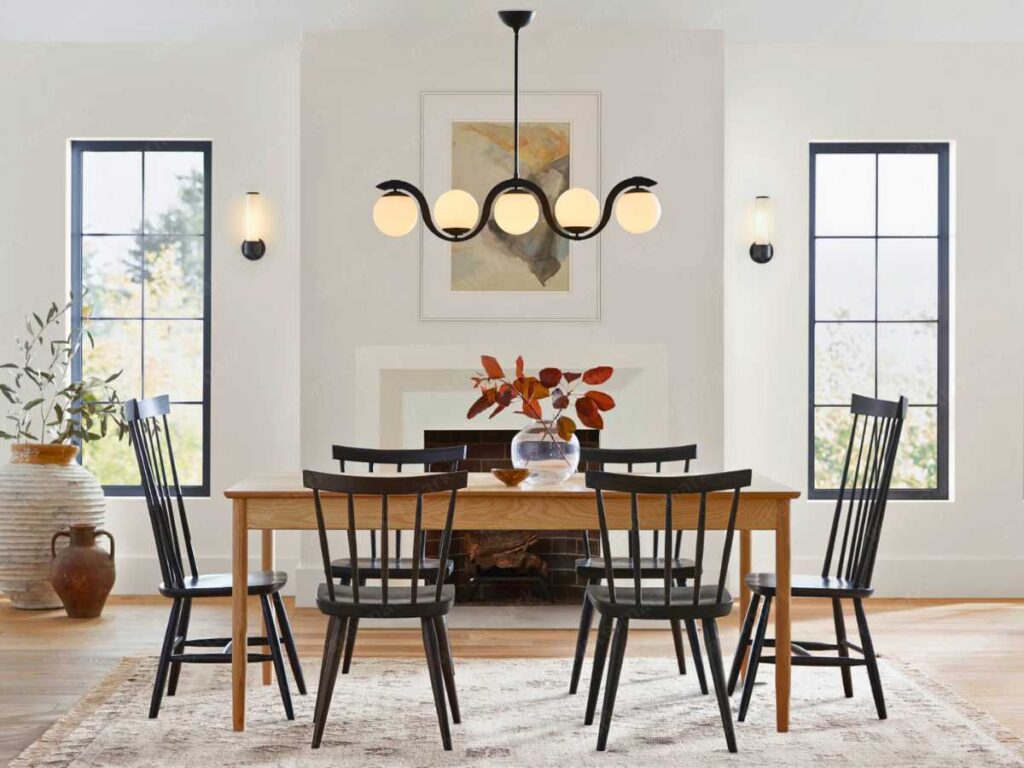
The dining room is where you gather for meals and special occasions, so the lighting for home here should enhance the dining experience and set a welcoming tone.
Lighting Recommendations:
- Ambient and Task Lighting: For the dining room, a central chandelier or pendant light serves as both ambient and task lighting. This type of fixture provides general illumination while also focusing light directly on the dining table, making meals and conversations more enjoyable. Choose a pendant light with adjustable height settings or a chandelier with a dimmer to customize the lighting based on the occasion, from casual dinners to formal gatherings.
- Accent Lighting: Wall sconces or accent lighting can be used to highlight artwork or architectural features, adding a touch of elegance and visual interest to the space.
Check Violoemi Dome Pendant Light on Amazon
Bedroom
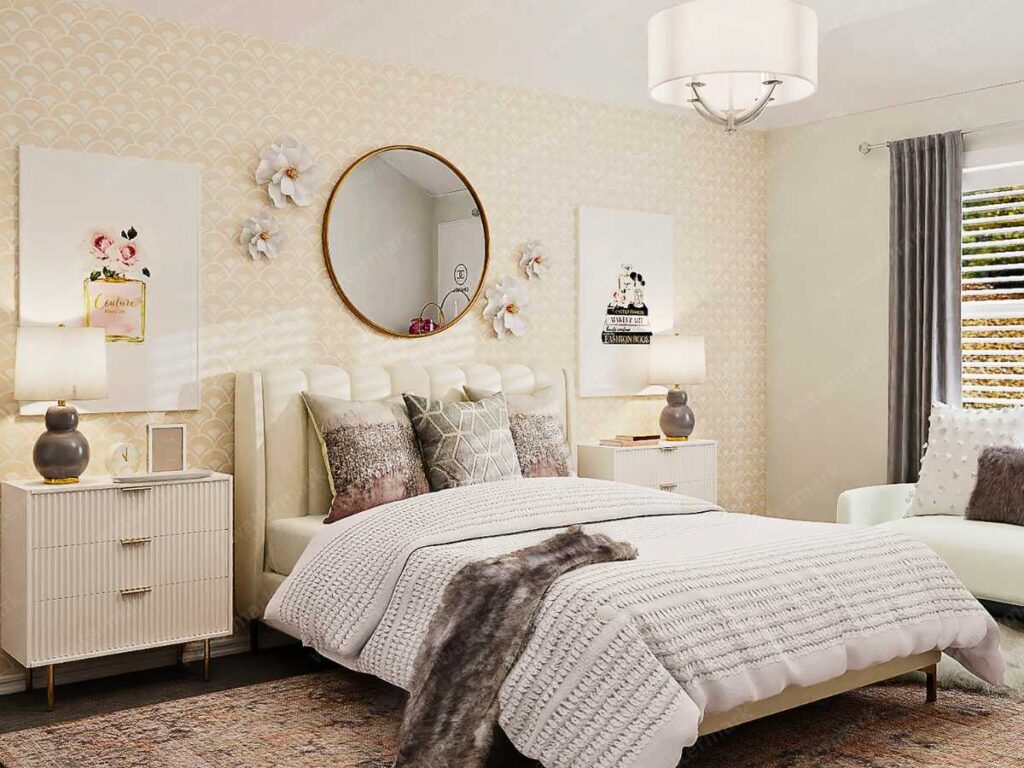
Your bedroom should be your personal sanctuary, offering a blend of cozy and practical lighting for home. Think of it as your haven for relaxing and unwinding from the day.
Lighting Recommendations:
- Ambient: A soft ceiling fixture or overhead light to create a warm, inviting glow.
- Task: Bedside lamps or wall-mounted reading lights for nighttime reads.
- Accent: Dimmable lights or LED strips to add ambiance and adjust the mood.
Bathroom
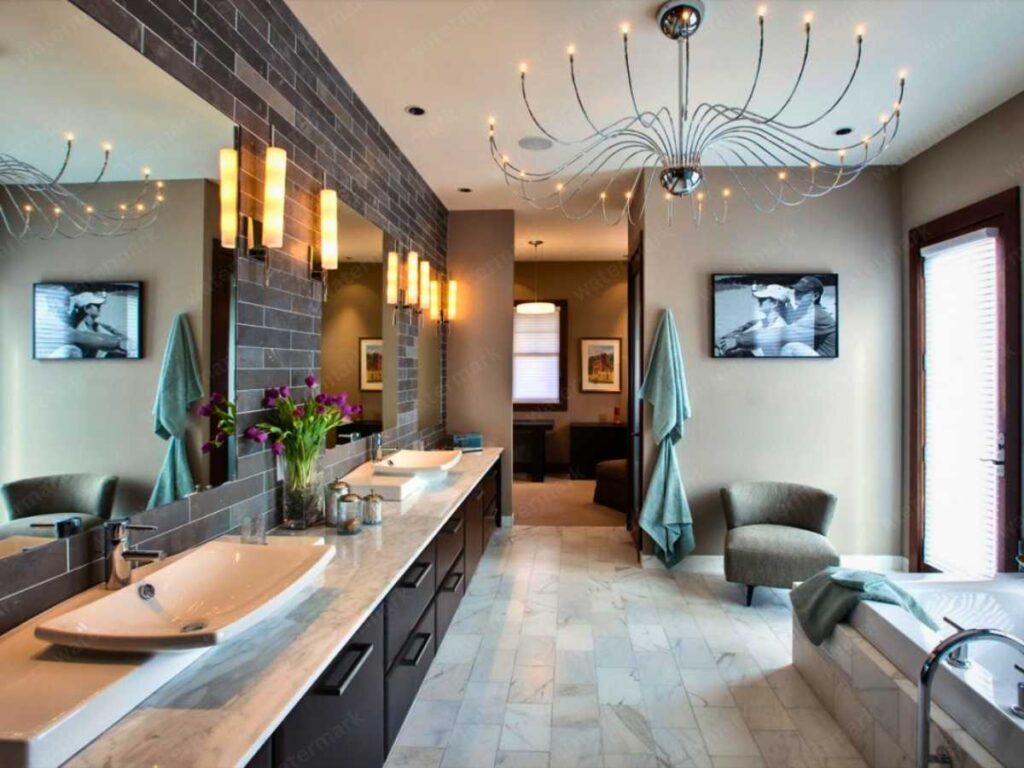
In the bathroom, you need bright, clear lighting for grooming and a relaxing ambiance for unwinding after a long day. It’s all about balancing functionality with comfort.
Lighting Recommendations:
- Ambient: Ceiling-mounted fixtures or overhead lights to ensure even illumination.
- Task: Vanity lights on either side of the mirror for a clear view during grooming.
- Accent: Recessed lighting or dimmable options to create a spa-like atmosphere.
Read more about bathroom lighting ideas.
Home Office
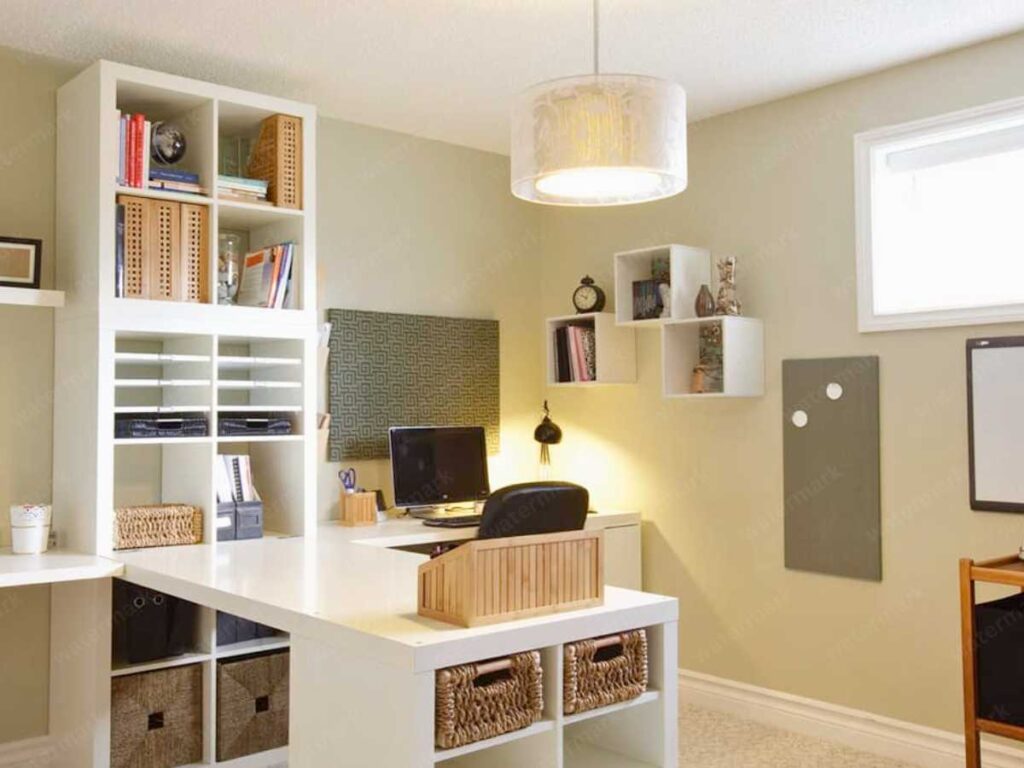
Whether you’re working from home or managing your personal projects, proper lighting for home in your office is essential for productivity and comfort.
Lighting Recommendations:
- Ambient: Ceiling light or overhead fixture to brighten up the space.
- Task: Adjustable desk lamp or task lighting to reduce eye strain and enhance focus.
- Accent: Decorative lights to make your workspace visually appealing.
Tips for Effective Interior Lighting Design
- Layering Lighting: Combine ambient, task, and accent lighting for a versatile and functional setup.
- Adjustable Light Levels: Use dimmers and adjustable fixtures to customize lighting based on activities and moods.
- Choosing the Right Bulbs: Consider color temperature and brightness to ensure your interior lighting design fits each room’s needs.
- Balancing Functionality and Style: Select fixtures that are both practical and enhance your home’s aesthetic.
In conclusion, effective interior lighting design is all about balancing practicality with style, creating spaces that are both functional and inviting. By understanding the types of lighting and how to apply them to different rooms, you’ll ensure that your lighting for home not only looks great but feels great too. So go ahead, light up your space with a bit of flair and make every room shine with purpose!

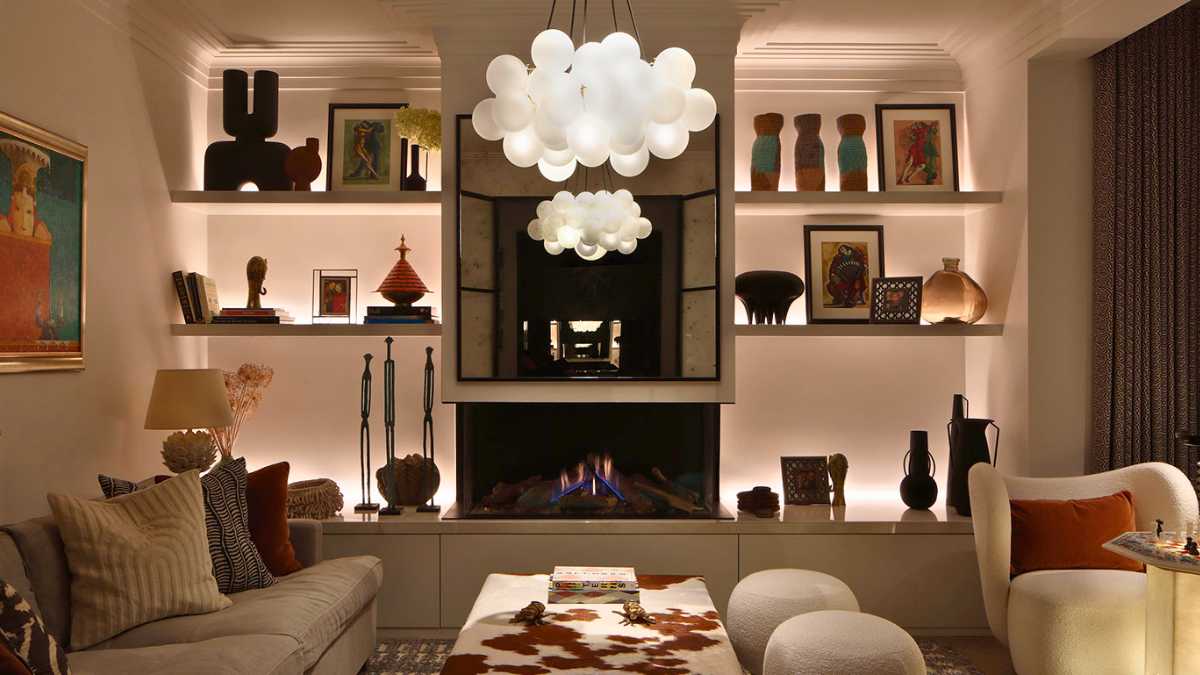
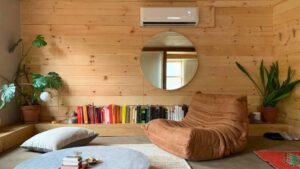
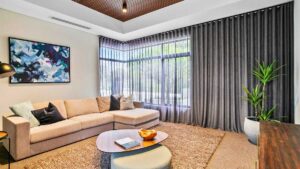
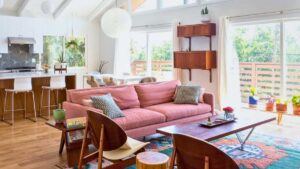

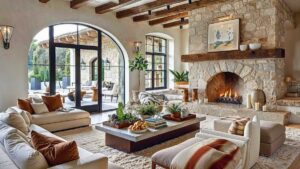

Leave a Comment